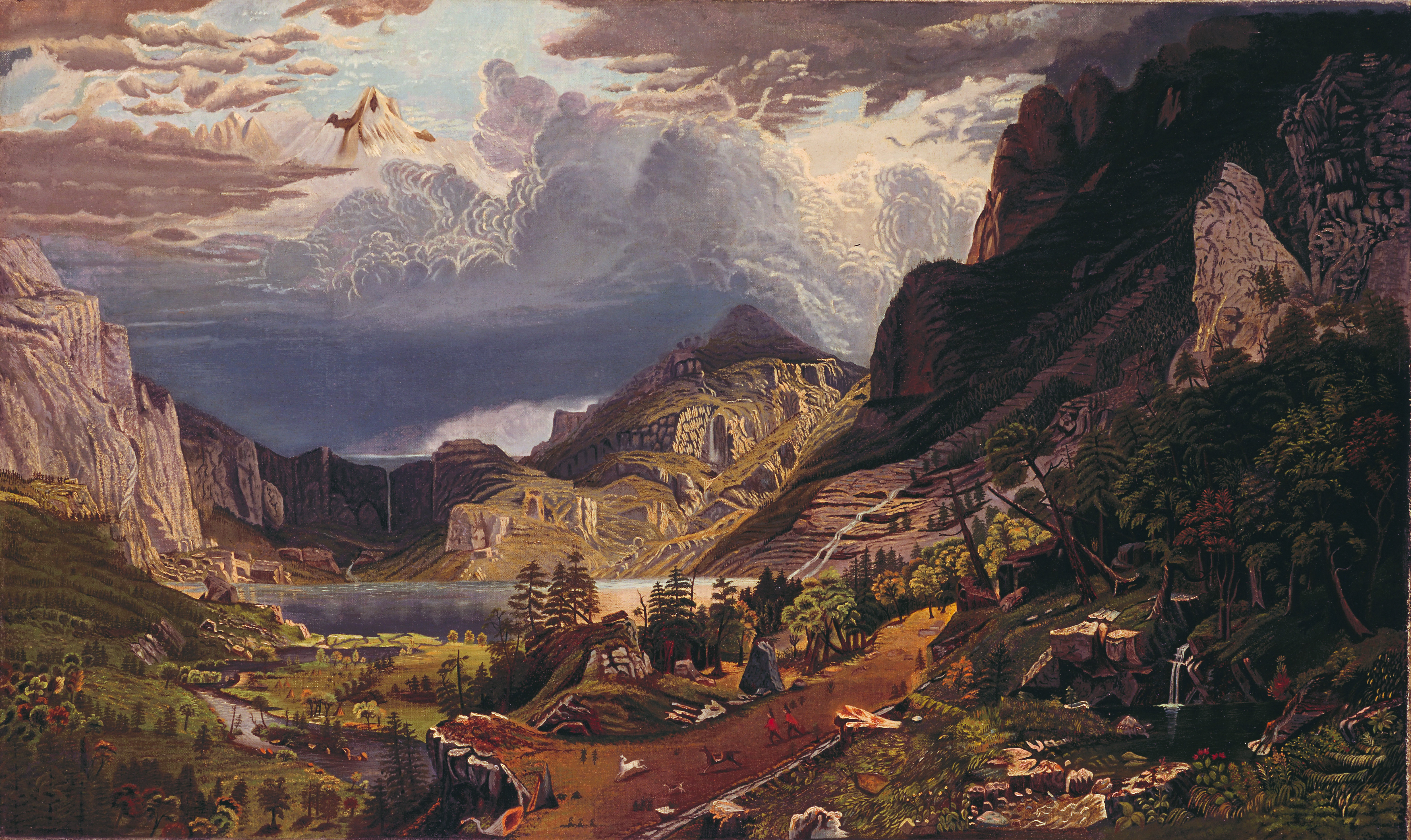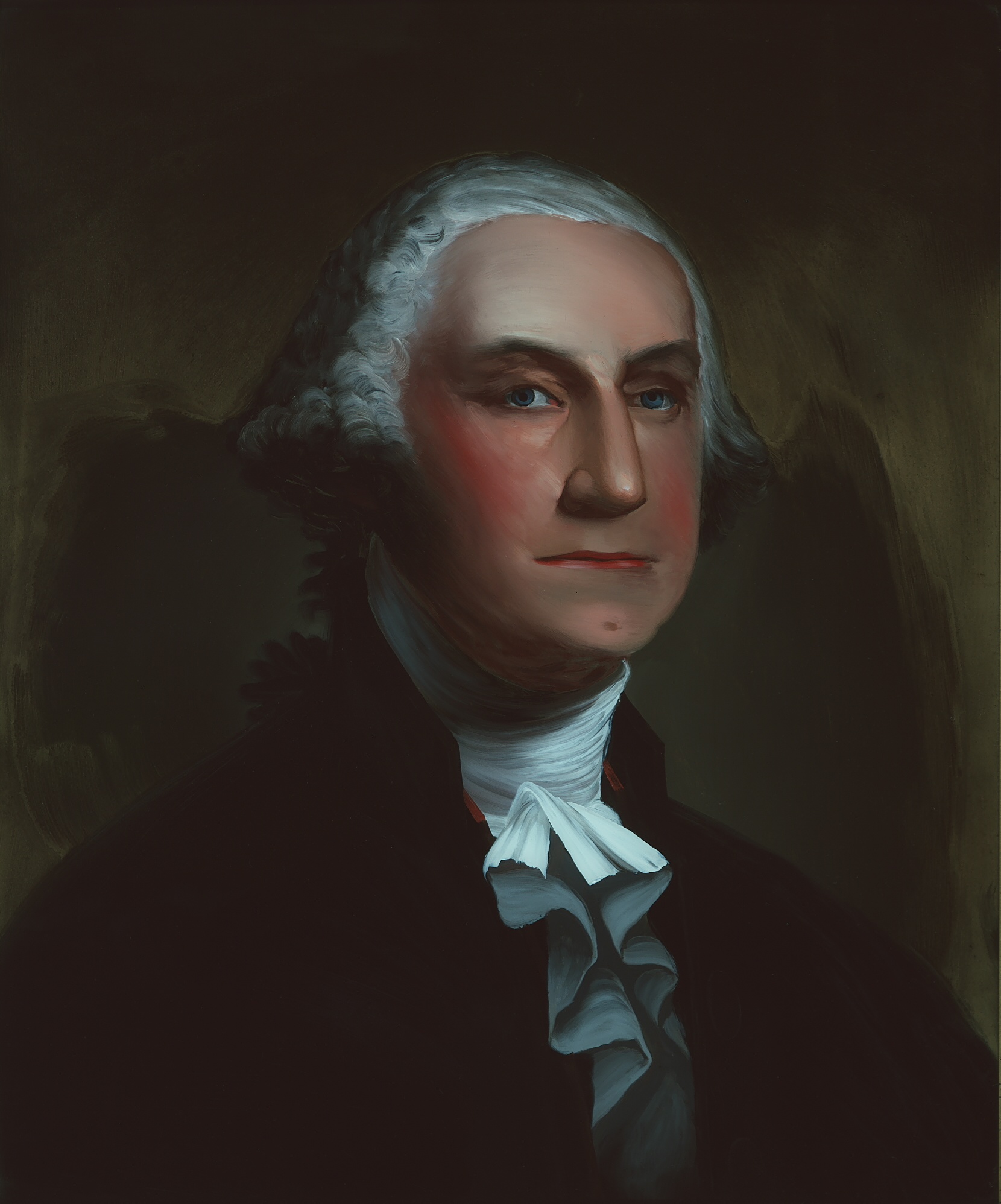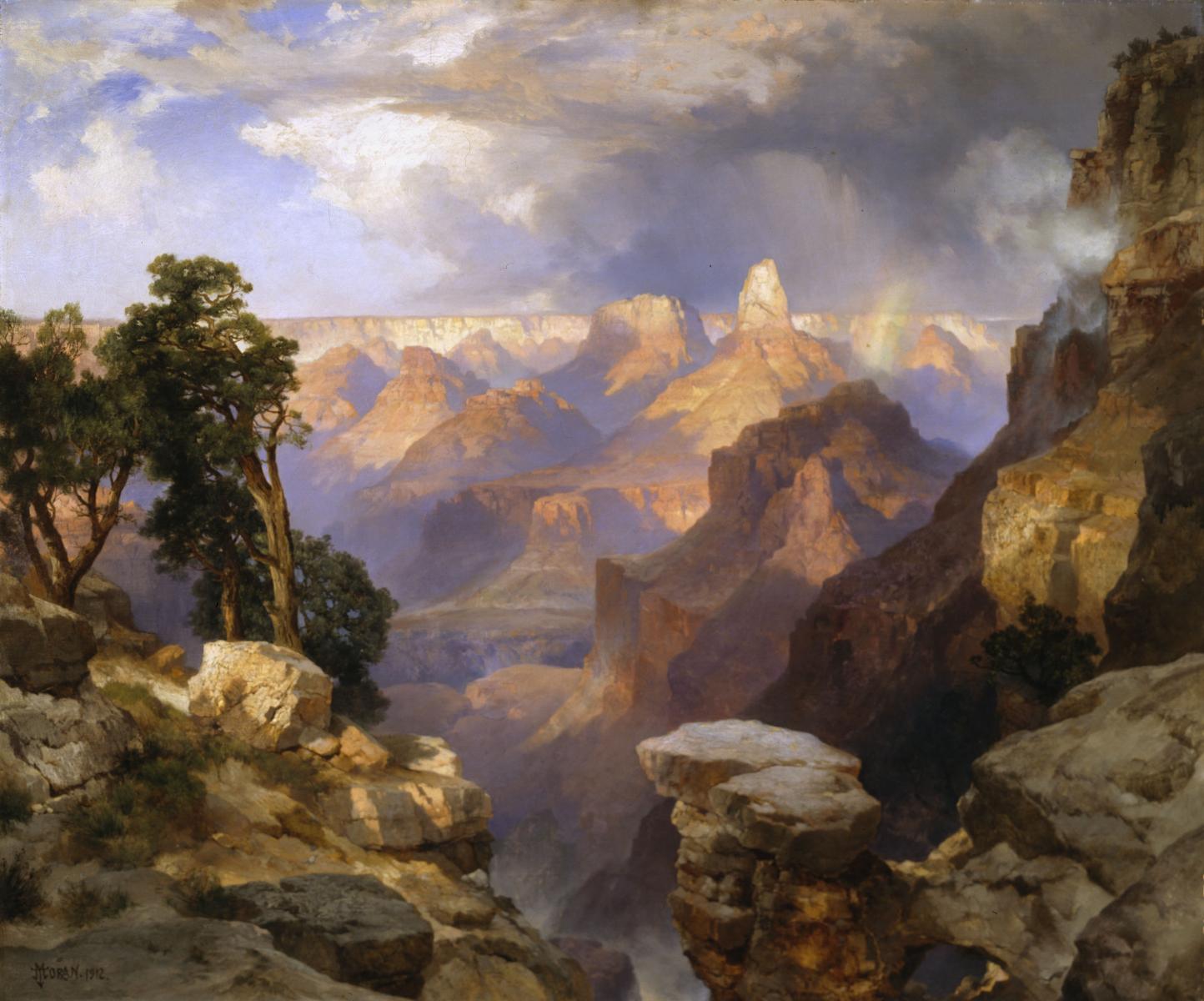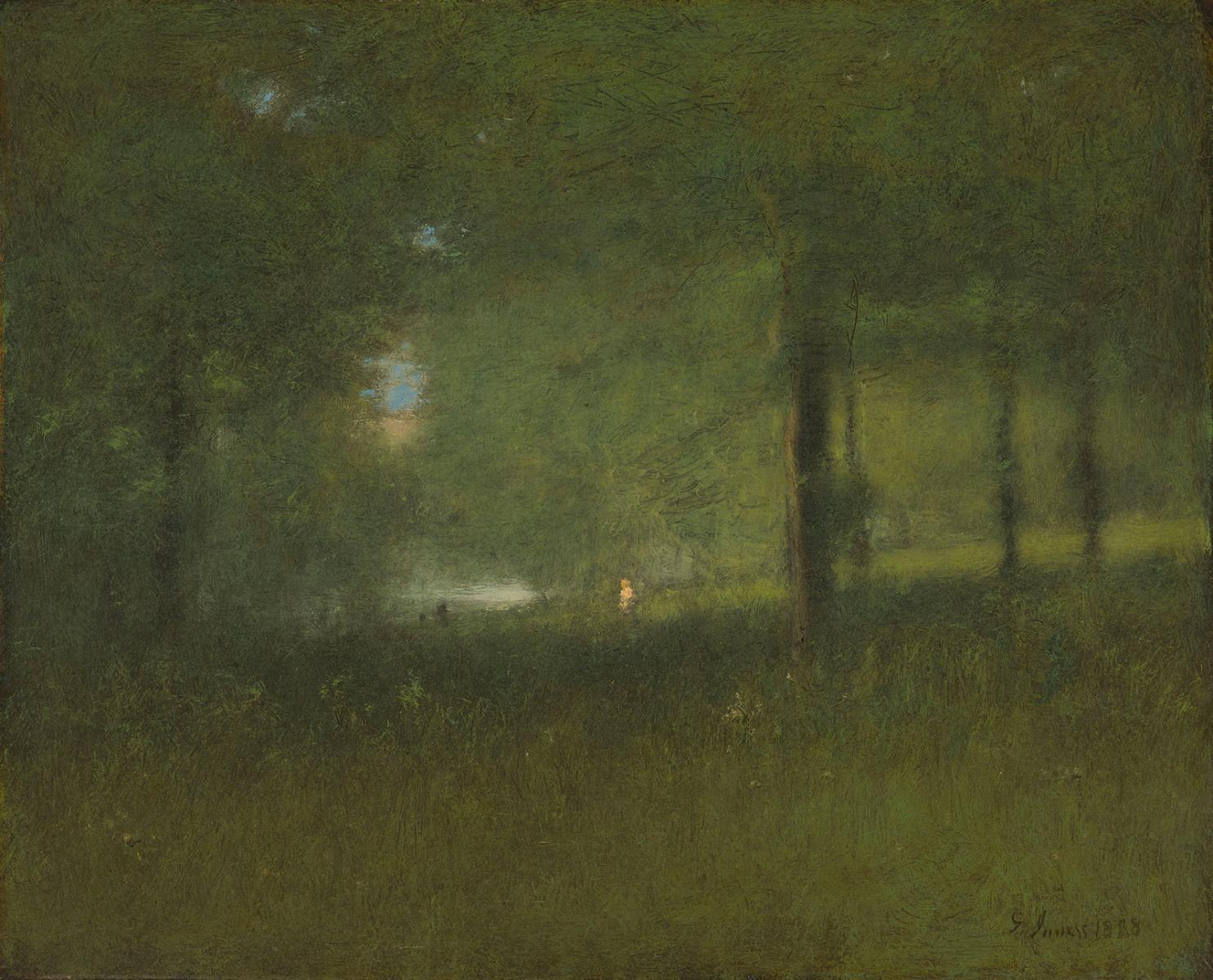Storm in the Rocky Mountains, Mt. Rosalie

Where do you see movement in this landscape?

Where do you see movement in this landscape?

Where do you see movement in this landscape?

Is George Washington relevant today?
This portrait was modeled after Gilbert Stuart’s 1796 portrait of George Washington, which Prior was permitted to copy in 1850. He then made numerous reverse-glass paintings based on the copy. This portrait provides contemporary museum visitors with an example of American reverse-glass painting (which was also popular on decorative arts objects, such as mirrors and clocks) and of the commercial ingenuity of American portrait painters working in the mid-19th century.

Is George Washington relevant today?
This portrait was modeled after Gilbert Stuart’s 1796 portrait of George Washington, which Prior was permitted to copy in 1850. He then made numerous reverse-glass paintings based on the copy. This portrait provides contemporary museum visitors with an example of American reverse-glass painting (which was also popular on decorative arts objects, such as mirrors and clocks) and of the commercial ingenuity of American portrait painters working in the mid-19th century.

What are symbols of mourning?
Mourning imagery was popular in 19th-century American visual culture. The iconography of such pictures was rooted in classical, Arcadian influences drawn from a variety of sources, combining European literature, philosophy, and the fine arts with American cultural ideals. Often featuring a grieving female figure within an idealized landscape, the traditional mourning picture format is believed to have been popularized after the death of George Washington, America’s first national hero.

What are symbols of mourning?
Mourning imagery was popular in 19th-century American visual culture. The iconography of such pictures was rooted in classical, Arcadian influences drawn from a variety of sources, combining European literature, philosophy, and the fine arts with American cultural ideals. Often featuring a grieving female figure within an idealized landscape, the traditional mourning picture format is believed to have been popularized after the death of George Washington, America’s first national hero.

How would you describe the “myth of the West”?
During the era of western expansion, the frontier came to exist in the American imagination as a land of unlimited promise and potential, an awe-inspiring paradise as depicted here by Moran. The natural beauty and unique geological features of sites like the Grand Canyon helped artists perpetuate the mythology of the West—Moran painted the Grand Canyon throughout his career, and some of these works were commissioned by railway companies to promote tourism.

How would you describe the “myth of the West”?
During the era of western expansion, the frontier came to exist in the American imagination as a land of unlimited promise and potential, an awe-inspiring paradise as depicted here by Moran. The natural beauty and unique geological features of sites like the Grand Canyon helped artists perpetuate the mythology of the West—Moran painted the Grand Canyon throughout his career, and some of these works were commissioned by railway companies to promote tourism.

What is revealed and concealed in this painting?
This landscape was painted during the artist’s years in Montclair, New Jersey, when he created many landscapes that only existed in his imagination. Filled with lush, green trees and grasses, the scene draws inspiration from the Barbizon sous bois tradition associated with the forest of Fontainebleau, in which the viewer is situated deep within—and beneath—a light-dappled woodland or forest canopy.

What is revealed and concealed in this painting?
This landscape was painted during the artist’s years in Montclair, New Jersey, when he created many landscapes that only existed in his imagination. Filled with lush, green trees and grasses, the scene draws inspiration from the Barbizon sous bois tradition associated with the forest of Fontainebleau, in which the viewer is situated deep within—and beneath—a light-dappled woodland or forest canopy.